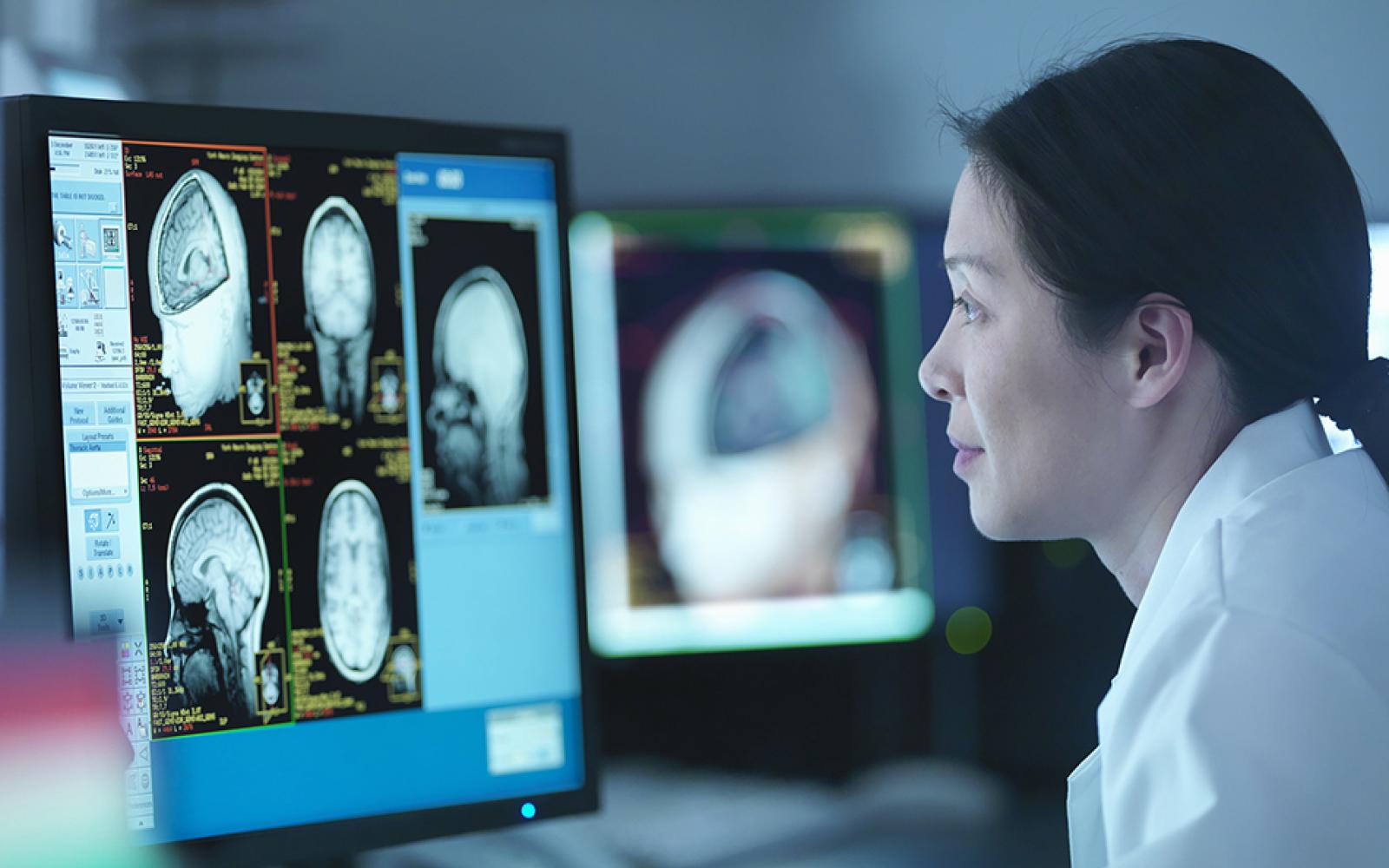
Hyperpolarized 13C MRI
Hyperpolarized 13C MRI is an advanced medical imaging technology that shows promise for numerous diagnostic and therapeutic applications.
Potential applications include the enhanced detection and monitoring of brain tumors. As a type of metabolic imaging, hyperpolarized 13C MRI can identify tumors, which use and metabolize nutrients differently than normal cells.
This experimental technique relies on the injection of a traceable compound or probe, which is injected prior to the scan. The 13C probes must first undergo a procedure called hyperpolarization, which orients the molecules to an MRI’s magnetic field. Hyperpolarization massively increases signal strength, so that the hyperpolarized probes can then be detected via MRI.
One of the most commonly used probes is hyperpolarized carbon-13 (13C) pyruvate, a modified sugar that is taken up and processed by cells. Hyperpolarized MRI can be used to monitor the metabolic breakdown of hyperpolarized 13C, which occurs at high levels in tumors.
The goal is to use hyperpolarized 13C MRI to more accurately detect and characterize a tumor, monitor its response to treatment, and adjust treatment accordingly. For example, hyperpolarized 13C MRI can help clinicians determine how well a treatment is working, by tracking changes in metabolism at the tumor site. Changes in metabolism happen very quickly, potentially allowing doctors to tell if a drug regimen is working days after it is administered. For patients with aggressive cancers, this could make a meaningful difference in choosing to abandon one regimen for another.
Ongoing work aims to improve the technology for use in the enhanced detection and real-time monitoring of brain tumors. Additional research focuses on the development of new hyperpolarized probes to monitor other tumor-specific metabolic pathways.
This content was reviewed by UCSF Professor of Radiology, Sabrina Ronen PhD.
